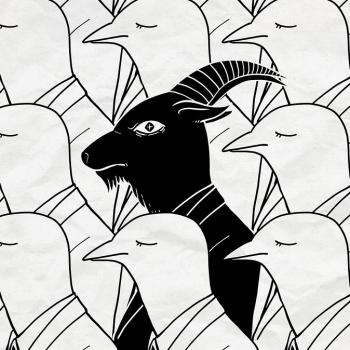I woke up to an interesting, cross-platform kerfuffle this past weekend. Apparently, young Pagans on TikTok are claiming that Full Moon rituals are closed practices and therefore off limits. Understandably, the venerable witches of Twitter are not having it. Such is life.
I myself am not on the TikTok, since I firmly believe that the only middle-aged gay dude who needs to be cavorting about there is Jim Newman. But what I did do was poke around and try to figure out where the whole open/closed practices thing came from. And what I learned is that it’s more than likely a socioecological concept that’s been misinterpreted and misapplied by idealistic but ignorant young’uns with Internet access. So, y’know. The usual.
For Instance…
Here’s a paraphrased conversation I recently stumbled across in a Pagan Facebook group.
Pagan 1: “Tarot is a closed Romani practice.”
Pagan 2: “Hello! I’m Romani. There are specific ways of reading Tarot that are unique to the Roma, and that are not discussed with or taught to people who aren’t Romani, but Tarot itself is not a closed practice.”
Pagan 1: “Thank you for your emotional labor.”
Pagans 3-7: “Yes! Thank you for your emotional labor.”
Pagan 1: “But you’re wrong.”
Pagan 2: “…”
Pagan 1: “WE’RE PROTECTING YOUR HERITAGE.”
The long and short of it is that anyone may read Tarot, and anyone may venerate the Full Moon; hell, for a hot minute, we all thought elephants worshipped the Moon.
Getting Lunar With It
My dad recently moved to Boston to be closer to his grandkids, and since he’s nearby now, my sister-in-law (who is half Chinese and half Thai) invited him to join her family for their Lunar New Year celebration. So he set out offerings of fruit with them, and lit some joss sticks, and by all accounts had a lovely experience.
Acknowledging the New Moon? Open. Leaving offerings to ancestors on the New Moon? Open. Leaving offerings to ancestors on the New Moon as part of an Asian-American family’s private ritual? Closed. Was it okay for my dad to participate? Yes: He was invited to do so by the family, which means he’d been accepted into the closed community.

So now, I want to compare the above to something that happened a few years back, when a random member of a Houston-area Pagan listserv popped in to announce that she was holding an “Open Gardnerian Full Moon Ritual.” This was concerning to the Gardnerians on the list, since a) she wasn’t a Gardnerian initiate, and b) there’s no such thing as an “open” Gardnerian ritual. So let’s pyramid again. Full Moon ritual? Open. Public Full Moon ritual? Open. Gardnerian Full Moon ritual? Closed. Was it okay for this woman to put on a public Full Moon ritual and advertise it as Gardnerian? No: She is not affiliated with that closed community.
The Kids Are All Right. Mostly.
Listen, I’m intimately familiar with the righteous indignation that comes with being a young Pagan: Back in my day, I even wrote a strongly worded, largely coherent letter to my college newspaper after they ran an op-ed on the satanic origins of Halloween. (I found out later that it was supposed to be a point-counterpoint piece, but the Pagan writer forgot to submit their rebuttal before the deadline.) And I’m glad that today’s Pagan youth are as aware as they are, and willing to stand up for what they believe — I just need them to simmer down long enough to understand that the alleged Romani origin of Tarot is a racist fabrication, and that the Moon is not anyone’s personal property.
And if WitchTok continues to be a thing, I’d really like to see it strive for more accuracy in content. As far as I’m concerned, if it’s not as historically relevant as this one (or this one), then it needs to be gotten off my lawn.


















